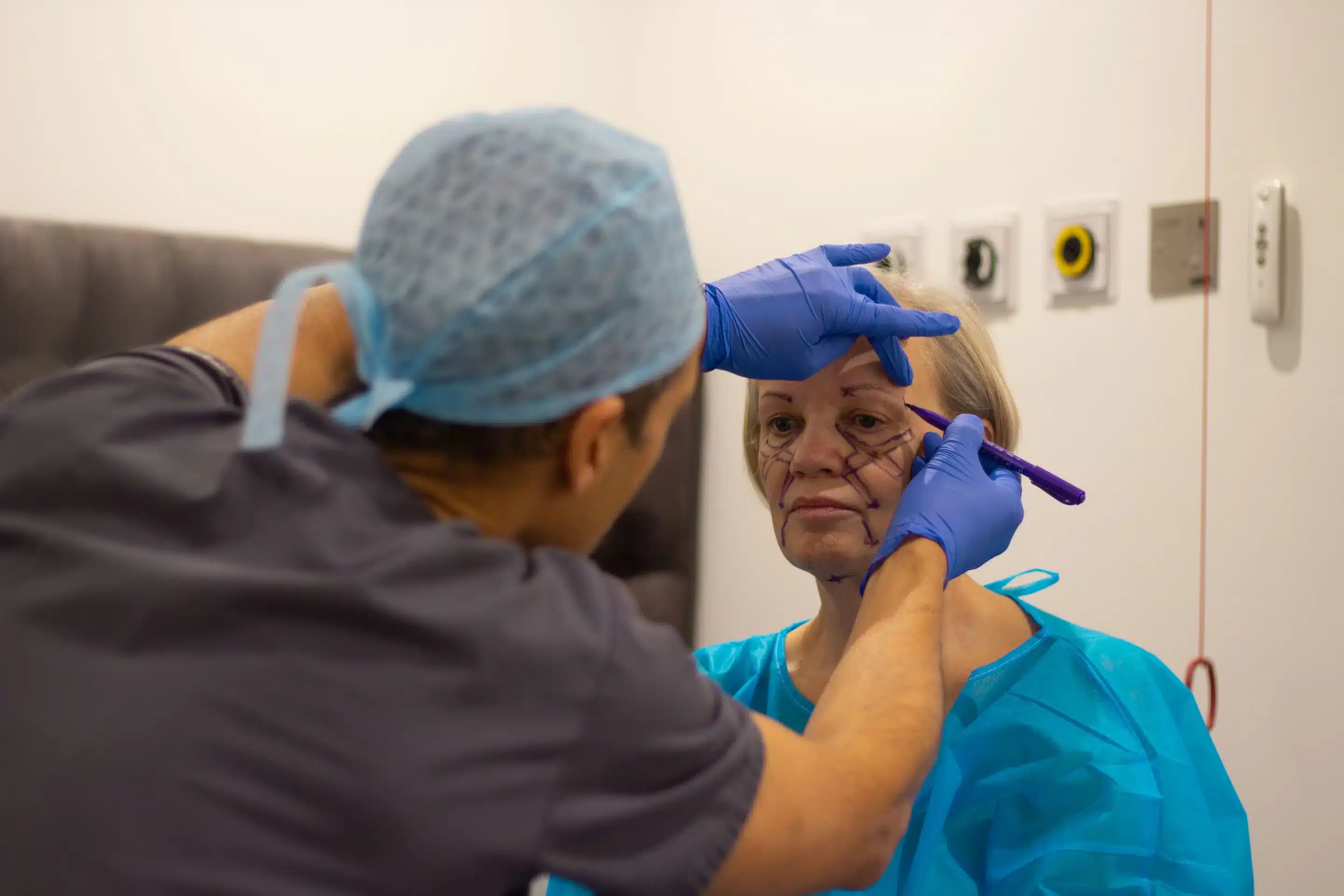A facelift can take years off your appearance, but it doesn’t stop the ageing process. Over time, skin changes, volume loss, and gravity can slowly alter the results. The good news? With the right facelift maintenance plan, you can keep your face looking refreshed for many years.
This guide covers aftercare facelift surgery, facelift aftercare, and tips for maintaining facelift results. It combines immediate recovery advice with long-term strategies you can follow at home or with your surgeon’s guidance.
Why Facelift Maintenance Matters
A facelift repositions skin, muscle, and sometimes fat to restore a youthful look. You might also have complementary treatments like fat transfer or laser resurfacing at the same time. But ageing continues after surgery.
The three main changes that happen over time are:
- Volume loss: Natural fat under the skin gradually reduces, which can make features look less full.
- Skin loosening: Skin elasticity decreases, making it softer and looser.
- Gravity’s pull: Over time, tissues naturally shift downwards.
Without proper upkeep, these changes can affect your facelift results sooner than you’d like. That’s why building a maintenance routine is key.
Immediate Aftercare Following Facelift Surgery
The first few weeks after your procedure are the foundation for long-term success.
Here’s what helps during recovery:
- Follow your surgeon’s instructions: This includes wound care, medication schedules, and when to return for check-ups.
- Keep swelling down: Use cold compresses and sleep with your head elevated.
- Avoid heavy activity: Give your body time to heal before resuming exercise.
- Eat well and stay hydrated: Good nutrition supports faster recovery.
- Protect your skin from the sun: UV exposure can slow healing and damage fresh results.
These steps don’t just speed up recovery, they also protect the work your surgeon has done.
Maintaining Facelift Results Over Time
Once you’ve healed, the focus shifts to keeping your results looking their best. A combination of non-surgical treatments and healthy lifestyle habits can slow visible ageing.
1. Topping Up Lost Volume
Over time, you may notice cheeks, temples, or under-eye areas looking less full. This is a natural part of ageing, but it can be addressed.
Options include:
- Dermal fillers are a quick, non-surgical way to restore fullness.
- Fat transfer means using your own fat for a more permanent solution.
Small touch-ups every year or two can help you maintain the smooth, youthful contours from your facelift.
2. Tightening Skin as Elasticity Changes
Skin naturally loses firmness with age, but treatments can slow the process.
Popular options are:
- Radiofrequency therapy stimulates collagen to firm skin.
- Laser resurfacing improves skin texture and tone.
- Platelet-rich plasma uses your own platelets to boost healing and skin health.
These treatments work best when done regularly rather than waiting for major changes to happen.
3. Minimising the Effects of Gravity
While you can’t stop gravity, you can reduce how much it impacts your appearance.
- Non-surgical skin tightening, like ultrasound or radiofrequency, can lift and firm slightly.
- Volume restoration adds fullness and can help counter drooping areas.
Think of it as small corrections over time rather than letting everything shift before acting.
Healthy Habits That Support Facelift Maintenance
Professional treatments are effective, but your daily habits are just as important.
- Use sunscreen every day: This protects against UV damage that ages skin faster.
- Eat a balanced diet: Nutrients from whole foods support skin health.
- Stay hydrated: Keeps skin plump and elastic.
- Avoid smoking: Smoking breaks down collagen and speeds up skin ageing.
- Manage stress: Chronic stress can impact overall skin quality.
When you combine good habits with targeted treatments, you’re giving your facelift the best chance to last.
How Often Should You See Your Surgeon?
Many surgeons recommend a yearly review after your facelift. This allows them to:
- Assess your skin and facial structure
- Suggest maintenance treatments
- Catch early signs of ageing changes
Even patients who travel long distances often make the trip once a year for these “tweak” appointments. It’s a small investment that can make a big difference in how long your results last.
Common Myths About Facelift Aftercare
Myth 1: Once you have a facelift, you never need another treatment.
Reality: Ageing continues, so maintenance is essential.
Myth 2: Non-surgical treatments can replace surgery.
Reality: They work best as a follow-up to surgery, not a substitute for major lifting.
Myth 3: Good genes mean you don’t need aftercare.
Reality: Genetics play a role, but lifestyle and maintenance have a huge impact.
Building Your Personal Facelift Maintenance Plan
Every face is unique, and so is every maintenance plan. Factors like your skin type, age, and lifestyle will guide what works best for you.
A good plan usually includes:
- Annual check-ups with your surgeon
- Skin-tightening or resurfacing treatments
- Occasional filler or fat transfer for volume
- Daily skincare and sun protection
Your surgeon can help map out a schedule that balances effectiveness and convenience.
Conclusion
Facelift maintenance isn’t about doing everything at once. It’s about making small, consistent efforts over time. Whether it’s adding a touch of volume, tightening skin, or protecting it daily, these steps add up.
A facelift gives you a fresh start, but what you do afterwards decides how long it lasts.
Ready to keep your facelift results for years to come? Book a facelift consultation today and get a personalised aftercare plan that works for you.





